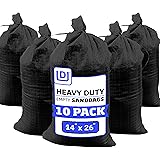Building Strong Relationships in Prepper Communities
Establishing Trust and Communication
Trust and communication form the backbone of any successful prepper community. In my own experience, it’s crucial to be open and honest from the get-go. Transparency in your intentions builds an atmosphere where everyone feels comfortable.
Regular meetings and informal gatherings promote a closer bond. I find it effective to schedule weekly check-ins either physically or virtually. This keeps everyone on the same page and ensures that any arising issues are promptly addressed.
It’s also important to have structured communication channels. Whether it’s a dedicated group chat or a more formal platform, knowing where and how to reach out to each other at all times is essential.
Defining Common Goals
Every successful prepper community I’ve been a part of has had clearly defined common goals. These could range from simple tasks like pooling resources to more complex projects like group training sessions. Aligning on these goals ensures that everyone is working towards the same objectives, which fosters unity.
I always recommend setting both short-term and long-term goals. Short-term goals keep the momentum going, while long-term goals provide a vision for the future. These goals should be revisited regularly to track progress and make necessary adjustments.
Finally, assign roles based on each member’s strengths. This makes everyone feel valuable and increases the efficiency of reaching those common goals.
Conflict Resolution
Conflicts are inevitable in any group setting. However, it’s how they are handled that can make or break a community. From my experience, the best way to manage conflicts is through open dialogue. Encourage members to voice their concerns and listen to each other without interruption.
A conflict resolution protocol should be established early on. This could involve a neutral mediator within the group or an agreed-upon set of guidelines that everyone adheres to. This structured approach can ease tension and resolve issues more effectively.
== > What if ... Get a FREE Subscription to PREPARE
Lastly, fostering a culture of empathy and understanding can go a long way in mitigating conflicts. Remind members to consider each other’s perspectives and work towards a compromise.
Sharing Knowledge and Resources
Knowledge Sharing Platforms
Sharing knowledge is the cornerstone of a thriving prepper community. In my own experience, setting up a dedicated platform for this purpose can be incredibly beneficial. This could be an online forum, a Facebook group, or even a dedicated section in your regular meetings.
Encourage members to contribute their expertise, whether it’s gardening, first aid, or mechanical skills. Having a space where this knowledge is accessible to everyone strengthens the entire community.
I’ve found that regular workshops or webinars are also effective. These can be organized on a rotating basis, allowing different members to share their expertise on a particular topic.
Resource Pooling
Pooling resources can be a game-changer for any prepper community. By sharing items and resources, you can ensure that everyone is well-prepared without the burden falling solely on one person. In my own community, we created a shared inventory list of non-perishables, tools, and medical supplies.
It’s important to have a system for tracking what’s available and what might be needed. This can be as simple as a communal spreadsheet or a more sophisticated inventory management app. Regularly updating this list ensures that everyone knows what’s available.
Resource pooling not only eases the individual financial burden but also fosters a sense of shared responsibility and cooperation.
Skill Swapping
Skill swapping is another effective way to support each other. Each member of the community brings a unique set of skills, and swapping these can be mutually beneficial. For example, I may be good at first aid, whereas another member might be skilled in carpentry.
Organize skill-swapping sessions where members teach each other essential skills. These sessions not only improve the overall capabilities of the community but also build stronger relationships among members.
Documenting these skills in a communal database can be helpful for future reference. When someone needs a particular skill, they know exactly who to reach out to.
Organizing Community Events and Training
Planning Regular Meetups
Regular meetups are vital for keeping everyone engaged and connected. In my experience, these could range from informal gatherings to more organized training sessions. The key is consistency. Regular meetups ensure that everyone is actively participating and staying involved.
Choose a convenient time and location that works for the majority. These meetups can be rotated among members’ homes or held at a community center. The agenda should include updates, goal assessments, and a segment for socializing.
It’s also beneficial to have a specific focus for each meetup. This could be a training session, a new project discussion, or even a problem-solving workshop. This keeps the meetups productive and engaging.
Training Sessions
Training sessions are a great way to enhance the skills of your community members. These can be organized based on the needs and interests of the group. From basic first aid to advanced survival techniques, there’s always something new to learn.
Invite experts from within the community or even external instructors to lead these sessions. Having a structured training program can significantly boost the preparedness of the entire community.
Document these training sessions and share the materials with members who couldn’t attend. This ensures that everyone has access to the same knowledge.
Community Drills
Conducting community drills is an effective way to test the readiness of your group. These drills should simulate real-life scenarios that require quick and coordinated responses. It could be an evacuation drill, an emergency medical response drill, or even a communication blackout scenario.
In my community, we conduct these drills quarterly. They help us identify any weaknesses in our plans and improve our coordination. It’s also a great way to build confidence among members.
After each drill, have a debriefing session where members can discuss what went well and what needs improvement. This feedback loop helps refine your community’s preparedness strategies.
Mental and Emotional Support Within the Community
Creating a Supportive Environment
Mental and emotional well-being is just as important as physical preparedness. I’ve learned that creating a supportive environment where members feel comfortable expressing their concerns is crucial. This builds a sense of belonging and trust.
Encourage open discussions about the mental and emotional aspects of prepping. Acknowledge that stress and anxiety are natural, especially when dealing with potential crises. Simply knowing that you’re not alone can be incredibly comforting.
Incorporate activities that promote relaxation and stress relief into your regular meetups. This could be a group meditation session, a nature walk, or even a casual game night.
Peer Support Groups
Peer support groups can provide an additional layer of emotional support. These smaller groups can meet separately to discuss more personal concerns and offer deeper support. In my experience, having these smaller, more intimate settings encourages members to open up.
Rotate the leadership of these groups to avoid burnout and to give everyone a chance to contribute. Having a trained counselor or mental health professional as part of your community can also be beneficial.
Documenting the discussions in these groups, while maintaining confidentiality, can help track the emotional well-being of the members over time.
Access to Professional Help
Sometimes, professional help is required. Ensure that your community has access to mental health professionals. This could be through partnerships with local counseling services or having trained therapists as part of your group.
Providing information on how to access these services, even anonymously, can be a lifeline for someone in need. Have these resources readily available and ensure that members know how to reach out for help.
Incorporating mental health check-ins during your regular meetings can also normalize the conversation around mental health and make it easier for members to seek the help they need.
FAQs
What is the first step in building a prepper community?
The first step is usually to establish trust and effective communication among the members. Open and honest discussions set the groundwork for a cohesive group.
How often should we conduct community drills?
It’s a good practice to conduct community drills at least quarterly. This keeps everyone sharp and prepared for any real-life emergency scenarios.
Why is sharing knowledge important in a prepper community?
Sharing knowledge ensures that all members have access to vital information that can be life-saving. It also empowers each individual, making the entire community stronger.
How can we provide mental and emotional support in our community?
Creating a supportive environment, encouraging open discussions, having peer support groups, and providing access to professional help are effective ways to offer mental and emotional support.






